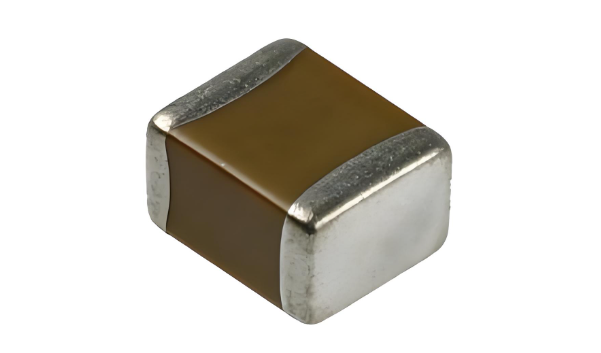Multi-Layer Ceramic Capacitors (MLCCs) are compact, high-performance passive electronic components widely used in electronics to store and release electrical energy, filter signals, and stabilize voltages. Their layered construction enables high capacitance in a small form factor, making them indispensable in modern devices from smartphones to industrial machinery.
MLCCs are composed of alternating layers of ceramic dielectric material and metal electrodes (typically nickel, copper, or silver), stacked and sintered into a single compact block. The number of layers and the surface area of the electrodes directly influence capacitance—more layers or larger electrodes increase energy storage capacity. The ceramic dielectric, often made from materials like barium titanate, determines key characteristics such as temperature stability, voltage rating, and frequency response.
Manufacturers offer MLCCs in various form factors (e.g., 0402, 0603, 1206 in imperial units), with sizes as small as 01005 (0.4mm x 0.2mm) for miniaturized devices. This versatility allows integration into space-constrained PCBs (printed circuit boards) across industries.
Critical parameters defining MLCC performance include:
-
Capacitance: Ranges from picofarads (pF) to microfarads (µF), tailored to applications like signal filtering (low capacitance) or power conditioning (high capacitance).
-
Voltage Rating: From a few volts (for consumer electronics) to thousands of volts (for industrial equipment), indicating the maximum voltage the capacitor can withstand.
-
Temperature Coefficient: Classified by standards (e.g., C0G, X7R, Y5V) to denote stability across temperature ranges. C0G (NP0) offers high stability (-55°C to +125°C), while X7R balances performance and cost for general use.
-
ESR (Equivalent Series Resistance): Low ESR ensures efficient energy transfer, critical for high-frequency applications like RF circuits.
-
Reliability: Designed to resist mechanical stress, moisture, and thermal cycling, with options for automotive-grade (AEC-Q200) or aerospace-grade components meeting strict durability standards.
MLCCs are ubiquitous in electronics due to their versatility:
-
Consumer Electronics: Smartphones, laptops, and wearables use MLCCs for power management, noise reduction, and touchscreen signal processing.
-
Automotive: In electric vehicles (EVs), ADAS (Advanced Driver-Assistance Systems), and infotainment systems, MLCCs stabilize battery voltages, filter sensor signals, and support high-frequency communication (e.g., 5G modems).
-
Industrial & IoT: Used in factory automation, sensors, and smart grid equipment to regulate power supplies and ensure reliable data transmission.
-
Telecommunications: 5G base stations, routers, and fiber-optic systems rely on MLCCs for signal filtering and voltage regulation in high-speed data networks.
-
Aerospace & Defense: Radiation-hardened MLCCs with wide temperature ranges support avionics, satellites, and military hardware, where failure is critical.
The MLCC market is driven by demand for miniaturization, higher capacitance, and sustainability:
-
High-Capacitance MLCCs: Advances in dielectric materials (e.g., nanolayered ceramics) enable µF-range capacitance in small sizes, replacing bulkier electrolytic capacitors in EVs and power supplies.
-
Lead-Free and Green Materials: Compliance with RoHS (Restriction of Hazardous Substances) has led to lead-free electrodes and environmentally friendly dielectrics.
-
Automotive Electrification: EV growth boosts demand for high-voltage MLCCs (e.g., 50V to 100V) for battery management systems and motor controllers.
-
5G and IoT Expansion: Higher-frequency 5G networks require MLCCs with stable performance at GHz ranges, driving innovation in low-ESR, high-reliability designs.
While MLCCs offer significant advantages, design considerations include:
-
Voltage Derating: Operating below the maximum voltage rating (e.g., 50% for high-reliability applications) prevents dielectric breakdown.
-
Temperature Sensitivity: Some dielectrics (e.g., Y5V) exhibit capacitance loss at extreme temperatures, requiring careful selection for harsh environments.
-
Supply Chain Volatility: High demand, especially for automotive-grade MLCCs, has historically led to shortages, emphasizing the need for diversified sourcing.
Major producers of MLCCs include Samsung Electro-Mechanics, Murata Manufacturing, Taiyo Yuden, Yageo, and KEMET (a subsidiary of Kyocera). These companies invest heavily in R&D to develop next-gen MLCCs for emerging technologies like 6G, autonomous systems, and renewable energy infrastructure.
MLCC, Multi-Layer Ceramic Capacitor, MLCC applications, ceramic capacitor types, high-voltage MLCC, automotive MLCC, MLCC capacitance, surface-mount MLCC, 5G MLCC components, MLCC manufacturers.
